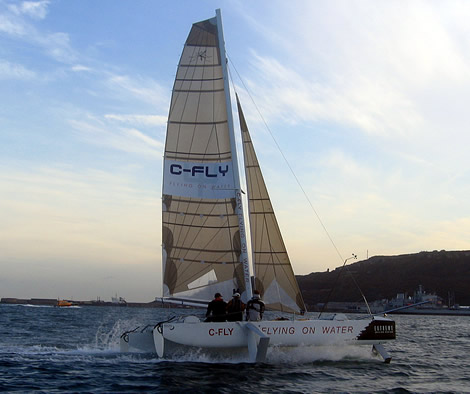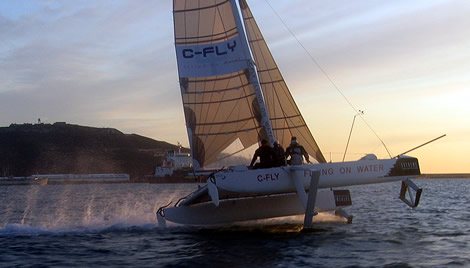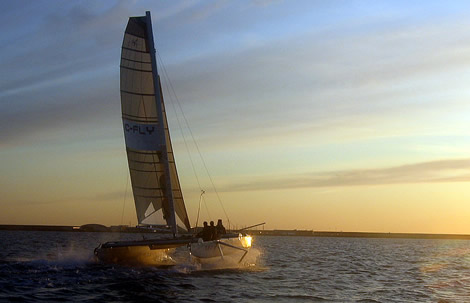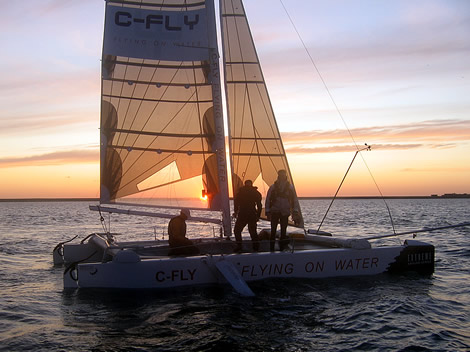C-Fly trials
The innovative 25ft hydro-foil sailing catamaran, C-Fly has spent the last two weeks undergoing extensive sea trials at Portland Harbour.
C-Fly, the brain-child of two aerospace engineers, Chris Edwards and Richard Varvill, is the product of over 15 years of development. They have applied their aerospace skills and called on their network of engineering professionals to solve the difficulties of sailing at very high speeds both safely and in comfort. This ‘proof of concept’ catamaran was unveiled last year. She has been designed to offer versatility and yet, in the right conditions, achieve 40 knots.
Taking advantage of the extensive facilities at the National Sailing Academy, C-Fly’s trials required easy access to the flat water and clear winds within the harbour; as well as having direct access to the open sea of the English Channel.
C-Fly could be seen crossing the harbour at speeds of 25-30 knots. The trials continued out at sea, encountering waves of 1.5m, demonstrating her exceptional sea-keeping and ability to continue hydro-foiling safely at speed.
The versatility of her hydro-dynamics is apparent in her controlled behaviour, even in significant seas. Sailing above the waves, her foils cut through the waves and she offers a comfortable and stable sailing platform.
Versatile for sure; when the conditions dictate, she can be sailed in ‘displacement mode’ like a normal high-performance catamaran. The sophisticated mechanical design enables the crew to rotate her foils out of the water thereby freeing her of the drag commonly associated with ‘foilers’ sailing in light airs.
To enhance the sea trials, she has been fitted with a monitoring system which measures and records the key components such as the strain in the hydro-foils and helm angle as well as speed, GPS location and wind so that shore-based analysis of the data confirms that her performance actually meets the design objectives.













Latest Comments
Add a comment - Members log in